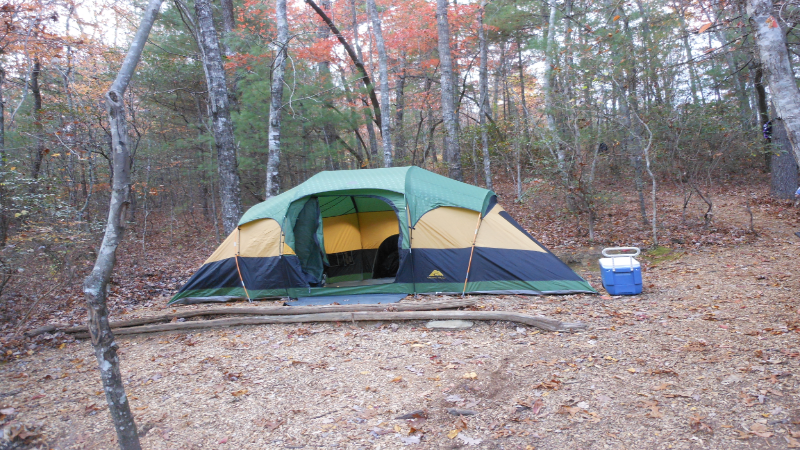Contact MEC | Help with Courses | My Account | Student Forum
Letting go creates space between you and problems that cause you stress. Once you have done everything in your power to solve a problem, you have done all you can, so at that point worry and stress are counterproductive. Letting go of the stress and anxiety doesn’t necessarily mean letting go of the problem itself. Remember that telling yourself not to think about it is thinking about it! Instead, letting go means not feeling you have to react to the anxiety associated with the problem. The energy you might have used worrying about the situation could be put to better use in coming up with solutions. Learning to let go in this manner is the first step in learning the art of radical acceptance.

3.0 The Bare Necessities
“Do everything with a mind that lets go. Do not expect any praise or reward. If you let go a little, you will have a little peace. If you let go a lot, you will have a lot of peace. If you let go completely, you will know complete peace and freedom. Your struggles with the world will have come to an end.”
– Achaan Cha, A Still Forest Pool
As Achaan Cha reminds us, the more we can let go of things, especially things that trouble us, the more peace and freedom we are able to create. The only true needs any human being has are food, clothing, shelter and love. In some environments, we might not even need the clothing and shelter!
Think about all the things that have stressed you out or caused you depression in the past. How many of those depressing or anxious thoughts involved the pursuit of things other than food, clothing, shelter and love? If we could learn to be happy with the bare necessities of life, how much of what causes us stress and depression would disappear?
What do we really need in life? How do we distinguish our needs from our wants?
For the next few moments, think about all the things in your life that have caused you stressful thoughts and feelings. Next, think about all the things in your life that have brought you pleasurable experiences. Do you notice any recurring themes in the stressful experiences? How about the pleasurable ones? If so, make a mental note of common themes in both stressing and pleasurable experiences. Hold those themes in mind as you go on to the next worksheet, Wants vs. Needs.
3.0 Wants vs. Needs Worksheet
3.1 Alone in the Woods
“Do not trouble yourself much to get new things, whether clothes or friends. Turn the old; return to them. Things do not change; we change. Sell your clothes and keep your thoughts.”
― Henry David Thoreau, Walden
The purpose of the Needs vs. Wants exercise is to demonstrate to us just how little we actually need in life to live a contented existence. We all need a few material possessions, but at some point we cease to own things, and things start to own us. If our happiness comes from the things that we own, what happens if we lose those things? Could we ever be happy again?
On the other hand, if happiness is something we learn to create from inside of ourselves, then nothing and no one can take that happiness from us. Happiness isn’t about our relationship to possessions. It’s about our relationship to ourselves and to others. Part of the art of letting go is recognizing our relationship to things that may be causing us stress in our lives. This can mean literal things like material possessions, or conceptual things like ideas and beliefs that are leading us into anxiety-producing thought patterns.
Imagine if we could let go completely, as the quote from Achaan Cha at the beginning of this chapter suggests. What if we could care about things and people without developing unhealthy attachments to them? What would our lives look like then?
In the mid-1990s I had the opportunity to conduct a personal experiment in letting go. During that time, I went off into the woods to live in a small cabin without utilities or running water. I remained there for nearly a year, cooking my meals on a coal-fired hibachi and bathing in a stream (The story of this Walden-like experience is recounted in my book, Green Circles: A Sustainable Journey from the Cradle to the Grave). After living there in the woods alone for a month or so I found that my consciousness changed for the better.
The experience taught me how little I actually needed to survive and thrive. At the end of the year there in the woods, I found myself at complete peace with myself and the world around me. Even though I was living in a tiny cabin in the woods without running water or electricity, it was one of the happier and more peaceful times of my life. A large part of the reason for this is that I didn’t have any attachments to material things weighing me down. I was able to let go of all of that, and to simply enjoy the pleasure of being.
Of course, I’m not suggesting that everyone should run off into the woods for a year. We can learn to let go of a lot of things in our lives without having to become hermits. The key is to ask ourselves openly and honestly how much of what we do in our lives is based on fulfilling our basic needs, and how much of what occupies our time has to do with chasing our wants and desires. When we can answer that, we have learned the art of letting go.
3.2 Letting Go: The Seesaw
Do you remember playing on a seesaw as a child? It always took two people. If one person got off the seesaw, the other couldn’t play.
Relationships are like that. If you find yourself in a disagreement, and there is no resolution in sight, it’s as if you and your partner are children playing on a seesaw. If you find yourselves going up and down, back and forth, with no end in sight, then maybe it’s time to get off the seesaw.
If you are both on the “problem seesaw,” and that problem doesn’t seem to have a resolution, you can choose to remove yourself from the situation by letting go. Your partner can’t play on the seesaw if you consciously choose to get off the seesaw yourself. Letting go is a way to get off the relationship seesaw.
In the martial art of Aikido, a smaller, weaker opponent can easily defeat a larger, stronger opponent. The reason for this is that Aikido doesn’t meet an attack head-on. Aikido redirects the energy of the attack by avoiding it altogether. This idea from Aikido translates into relationships as well. By refusing to meet an attack head-on, you redirect the energy. When your partner pushes, you don’t push back with equal force, you simply move out of the way. In other words, if your partner becomes highly agitated and emotional, you respond by becoming calmer, quieter and more rational. This is a skill that takes some practice, but if you can achieve it, you may be surprised at the results.
For example, suppose your partner says something like, “You never do anything I like to do!” Instead of arguing the point, you might agree to some extent. Notice that the statement “You never do anything I like to do!” is a global statement, using the word “never.” Global statements are statements in which all-or-nothing thinking is being used. Such statements use words like “always” and “never” to try to paint black-and-white portraits of behaviors, ignoring the grey areas where most of life happens. If your partner used such a global statement, you could redirect the energy of your partner’s attack by changing it to a specific, rather than global, statement, and by agreeing to a specific instance, by saying something like, “That’s true, last night I didn’t do what you wanted to do. I watched television instead.”
If your partner’s intent is to start an argument by stating that you never do what they want to do, you’ve gotten off the seesaw by calmly agreeing to a specific instance where that statement was true, but you’ve also changed it from a global to a specific instance. In this case, you’ve taken the negative energy out of the situation, because if you’re agreeing with your partner, then there’s nothing to fight about.
The key to getting off the seesaw is to meet your partner’s high energy attacks with a low energy response, in a calm, quiet, and mindful manner. To do this, it helps to focus on what your intention is in the situation. The questions of intention we discussed in Session 1 are:
- What is my intention in this situation (what am I trying to accomplish here)?
- Are my thoughts, feelings, beliefs, and behaviors going to help me to achieve this intention?
For example, if it is my intention to have a happy relationship, but I’m always arguing and fighting with my partner, does my behavior match my intention?
A simpler and more succinct way of putting it is: “Is it more important to me to be right, or is it more important to be happy in this relationship?”
By looking at our intentions openly and honestly, we can let go of behaviors that aren’t working and to focus on those behaviors that are helping us to achieve our objectives. We can talk about problems all day, but until we start talking about solutions, nothing ever gets solved (Barnes, et al, 2007). By learning to let go of the problem, we can more easily manifest the solution. When we have done so, we will have learned to let go by getting off the problem seesaw.
Barnes, Sean & Brown, Kirk & Krusemark, Elizabeth & Campbell, W. Keith & Rogge, Ronald. (2007). The role of mindfulness in romantic relationship satisfaction and responses to relationship stress. Journal of marital and family therapy. 33. 482-500. 10.1111/j.1752-0606.2007.00033.x.
Optional Activity: Survival Camping
If you enjoy camping, here’s an exercise you might try in order to learn how to simplify.
I once had a friend who bragged about being able to camp by only taking a knife and a ball of string. He had learned how to minimize his camping experience, so he didn’t have to lug a ton of camping equipment into the woods. He was an expert in backpack camping.
You can learn from my friend’s skills. Next time you plan to camp, look at your usual list of camping supplies. How much of it could you truly do without? Make a list for a weekend camping trip, taking only the bare necessities. Don’t leave anything behind (like food or water) that might be a safety issue but try to leave the luxuries at home. Instead of taking a cooler, try taking MREs or foraging (only forage if you know what you’re doing!). Instead of taking a cot and a tent, try taking a portable hammock with a rain fly, etc.
After camping this way for a weekend, do you notice anything different about your camping experience? Was it less or more enjoyable than your usual camping style?

3.3 Simplify
We live in a materialistic society. We’re constantly bombarded with messages that if we eat the right foods or wear the right clothes or drive the right car, we’ll achieve instant happiness. But if that’s really true, why are there so many millionaires whose personal lives are in tatters?
Given the choice between being the richest person in the world, yet living totally alone, or having just enough to get by, but living with a family and friends who love and care about you, which would you choose? The people who truly love us don’t care about what sort of car we drive or what sort of clothes we wear. They love us for who we are, not what we own or what we can buy for them. Likewise, the people who truly love us and care about us are more interested in our presence than in our presents.
The more possessions you own, the more time you spend paying for and maintaining your possessions. The more time you spend on your possessions, the less time you have to spend with family and friends, or even with yourself. The more stuff you own, the more time you have to spend working in to get the money to pay for and care for all that stuff, and the less time you have to spend doing the things you truly enjoy.
I once had a friend who wanted a big fancy boat. He worked hard until he could afford the down-payment on the boat, and then he was finally able to realize his dream. The problem came in when he started making payments on the boat. He soon found that he was working so much overtime paying for the boat that he never had the opportunity to actually enjoy the boat. He had not yet learned the art of simplifying by letting go.
Of course, there must be a balance. A certain amount of money is required simply to stay alive and to meet our basic needs. But one thing the current economic crisis has done, is to force us all to get by on less. In some ways this can be a good thing. It re-focuses our attention on what’s important in life. Our basic needs are food, clothing, shelter and love. Anything beyond that is candy. And we all know what happens when you eat too much candy!
Going back over the Needs vs. Wants list you just created in the exercise from Section 4.0, how many of the material possessions on your list are things you could do without? How many of them are basic necessities of life?
Sometimes possessions can be places to hide. Engaging in activities centered on possessions can be great escapes from dealing with our problems. We probably all know some husband who goes out in the garage and tinkers with the car in order to avoid intimacy with his wife. We also probably all know some wife who avoids intimacy with her husband by logging onto social media, or children who avoid interacting with their parents by playing video games all day.
What if we valued people more than possessions? How would that change our world?
If you find yourself using your possessions as a place to hide, a place to avoid connecting with others, with nature, or even with yourself, then make a promise to yourself right now that you will simplify your life. Maybe you could do with a few less new outfits. Maybe you could drive your car for another year or two instead of working overtime to pay for a new one. Maybe you could have a nice healthy home-cooked meal instead of gobbling down more greasy, fried fast food.
Mindfulness teaches us to slow down and focus on one thing at a time. The mindfulness of ecotherapy teaches us that we can slow down in our lifestyles as well. If we savor every moment, then we don’t have to fill those moments up with an endless stream of meaningless possessions. The more we can simplify our lives by eliminating the unnecessary clutter, the more we can practice the art of letting go.

3.4 Change is Inevitable: A Tale of Two Friends
I have two friends who talk about the weather a lot. One always complains about the weather. When the sun shines, he complains about the heat. When the sun doesn’t shine, he complains about the cold. When it’s cloudy out, he complains about the rain. Nothing the weather ever does seems to satisfy him.
My other friend talks a lot about the weather too, but her approach is different. When it’s rainy out, she says, “I’m so thankful for the rain! My plants could sure use it!” When it’s sunny out, she says, “I’m so glad for the sunshine!” When it’s cold out, she says, “Good, I needed a good excuse to curl up in front of the fire with a book and a cup of tea.”
Both these people live in the same area. They both experience the same weather on the same days. What’s different about these individuals is how each of them chooses to view change. One has learned to let go by practicing the art of mindful acceptance. She has learned that rainy days are at least as important as sunny ones. With this knowledge, she has learned to cherish and be thankful for all types of weather.
We tend to grumble and complain when bad things happen to us. We don’t like to be in pain or misery. We don’t even like to be inconvenienced. We’d probably all love to have our way all the time. But think about that for a moment. If we never had any bad times, how could we appreciate the good times? If you could eat pizza every day, even if pizza was your favorite food, wouldn’t you eventually get sick of it?
One aspect of mindful awareness is being mindful that change is inevitable. As the sage has said, “This too shall pass.” When change happens, we can accept it and go with the flow, or we can fight it and put ourselves in misery, like my friend who always complains about the weather (by the way, his complaining is pervasive. He complains about everything else in his life too!).
This concept of change applies to everything, even the bad times. So when things look bad, it may be helpful to remember that this too shall pass. This knowledge makes it easier to let go of the misery associated with bad times.
3.5 Everything Changes – Ride the Wave
I work a lot with people who have addictive behaviors. These addictions aren’t necessarily to alcohol and other drugs. People can be addicted to food, to bad relationships, to anger, or to a host of other different things. All these things produce chemical changes in our brains.
Our bodies are complex systems of cycles. These cycles peak and trough throughout the day, and throughout our lifetimes. They come and go in waves. When certain waves peak together, that’s when those addictive cravings hit. We may crave alcohol, or chocolate, or even an argument, to try to get our systems in balance again. When we’re on top of that wave, it can feel like that urge is never going to go away.
Since these changes occur in cycles if you can “ride the wave,” those urges will subside (Marlatt 1994). If we don’t give in to them and wait patiently for them to go through their paces, we can take comfort in the fact that they will eventually go away. Mindful awareness helps us to know our bodies and their complex cycles. It also helps us to know that this too shall pass. If we learn to be with the feeling, it will eventually disappear on its own.
If we are troubled by addictions, whether to substances, material possessions, or emotional states of being, the way to ride the wave is to sit quietly in the moment with the craving. We know from personal experience that the craving will eventually subside, even though it may feel, in the moment, as if it is going to last forever.
But if we are able, just for a moment, to let go of the urge to indulge, then another moment, then another, eventually the craving may subside. Even if it doesn’t, mindful awareness gives us the knowledge that we are not our cravings. We are in control if we choose to be. And we can mindfully choose to observe and describe the cravings to ourselves without having to act upon them. The more practice we have at this, the more we will be able to let go of those craving cycles when they occur.
Commentary. Mindfulness and metaphor in relapse prevention: An interview with G. Alan Marlatt. Journal of the American Dietetic Association, 94(8), 846-848, 1994.
3.6 Mindful Openness: Mindfully Letting Go
Do you remember what you were stressed out about ten years ago? Five years ago? A month ago? A week ago? Yesterday?
Think about the things that are stressing you out today. In five or ten years, will these things still matter to you? Mindful openness is the quality of learning to zoom out and see things in the bigger picture.
Imagine you were required to write a biography about your life from birth up to this present moment. Further imagine that you only had a paragraph or two (say 300 words or less) to write that biography. It may help to think of this couple of paragraphs as an entry in a sort of “Who’s Who” of your life and accomplishments.
What would you say about yourself in such a small space that would describe the essence of who you are?
How much space would you have in that biography to talk about the things that are stressing you out at this moment?
Mindful openness is a way of gaining a sense of perspective on life’s problems. It’s a way of focusing on the forest rather than on each individual tree. By seeing the problem in the context of our whole lives, we are more easily able to let go of any stress and anxiety it generates.
It’s important to note that letting go doesn’t mean that we pretend that the problem doesn’t exist. The idea isn’t to ignore the problem, or even to try to make it go away. The idea is to consciously observe and describe the problem while choosing not to ‘buy into’ the anxiety it generates. We’re not letting go of the problem. We’re letting go of the anxiety it creates.
When we learn to do this, we have mastered the art of letting go (Cordon, et al, 2009).
Cordon, S. L., Brown, K. W., & Gibson, P. R. (2009). The role of mindfulness-based stress reduction in perceived stress: Preliminary evidence for the moderating role of attachment style. Journal of Cognitive Psychotherapy: An International Quarterly, 23(3), 258–269.
Contact MEC | Help with Courses | My Account | Student Forum


